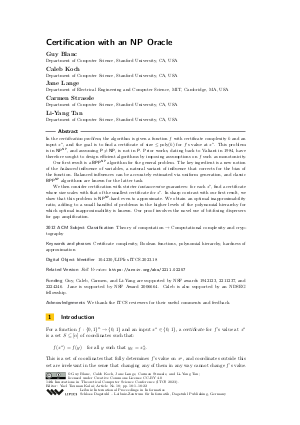LIPIcs.ITCS.2023.18.pdf
- Filesize: 0.9 MB
- 22 pages

 Creative Commons Attribution 4.0 International license
Creative Commons Attribution 4.0 International license

























Feedback for Dagstuhl Publishing